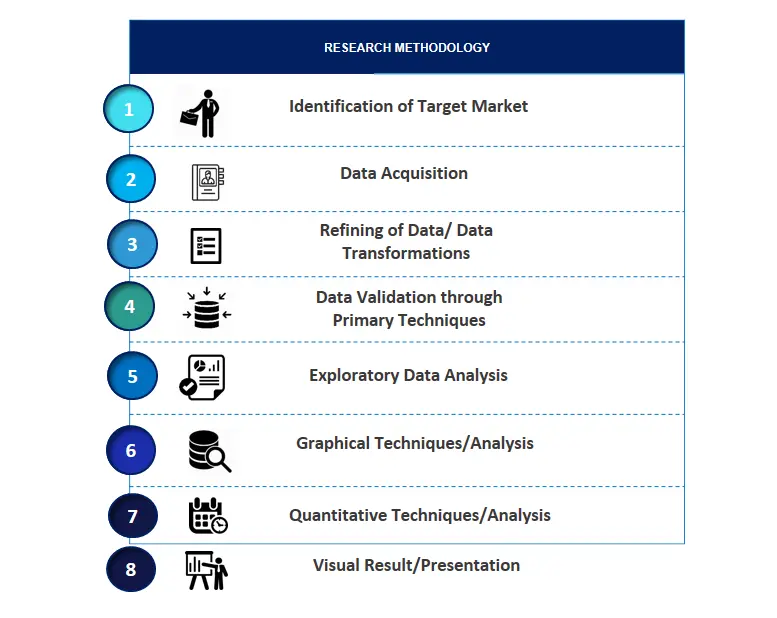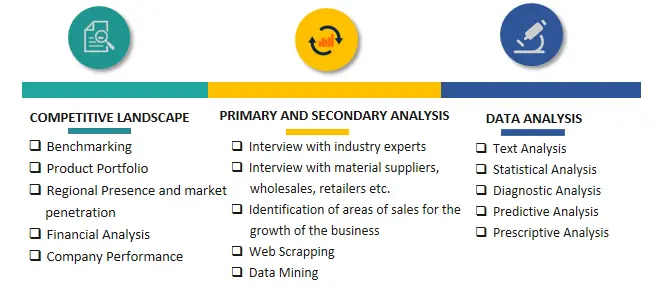
Playroom Furniture Market Growth, Trends, Size, Analysis, Demand and Future Outlook
Playroom Furniture Market Growth, Size, Trends Analysis - By Material, By Product, By End User, By Distribution Channel - Regional Outlook, Competitive Strategies and Segment Forecast to 2034
| Published: Jan-2025 | Report ID: FMCG2511 | Pages: 1 - 245 | Formats*: |
| Category : Consumer & Retail | |||


- In January 2025, Consortium Brand Partners effectively purchased the renowned home décor brand Jonathan Adler®, resulting in a notable growth in their line of luxury home items.
- In December 2024, Wooden Street obtained a sizeable investment of Rs 354 crore in its Series C funding round, which was managed by Premji Invest, with the goal of expanding its product portfolio and market reach.
- In October 2024, Havenly brands purchased Burrow, incorporating Burrow's distinctive furniture products and laying the groundwork for unmatched expansion and innovation in the home retail industry.
- In January 2024, Pottery Barn Kids, one of the portfolio companies of WILLIAMS-SONOMA, INC, revealed its first partnership with AERIN, a well-known premium lifestyle brand. Launched through POTTERY BARN KIDS, the line is the brand's exclusive product in the children's home furnishings sector.
| Report Metric | Details |
| Market size available for years | 2021-2034 |
| Base year considered | 2024 |
| Forecast period | 2025-2034 |
| Segments covered | By Material, By Product, By End Use, By Distribution Channel. |
| Regions covered | North America, Latin America, Asia-Pacific, Europe, and Middle East & Africa. |
| Companies Covered | American Signature Inc, Ashley Global Retail LLC, Bajaj Electricals Ltd, Berkshire Furniture, Herman Miller Inc, HNI Corp, IKEA, KIDS FURNITURE WORLD, Rooms To Go, Steelcase. |
- Global Playroom Furniture Market Size (FY’2021-FY’2034)
- Overview of Global Playroom Furniture Market
- Segmentation of Global Playroom Furniture Market By Material (Wood, Polymer, Metal)
- Segmentation of Global Playroom Furniture Market By Product (Desk/Table/Work Surface, Chair/Sitting Units, Storage/Organizer/Cabinets & Display Units, Others)
- Segmentation of Global Playroom Furniture Market By End User (Residential, Commercial)
- Segmentation of Global Playroom Furniture Market By Distribution Channel (Online, Hypermarket & Supermarket, Specialty Stores)
- Statistical Snap of Global Playroom Furniture Market
- Expansion Analysis of Global Playroom Furniture Market
- Problems and Obstacles in Global Playroom Furniture Market
- Competitive Landscape in the Global Playroom Furniture Market
- Details on Current Investment in Global Playroom Furniture Market
- Competitive Analysis of Global Playroom Furniture Market
- Prominent Players in the Global Playroom Furniture Market
- SWOT Analysis of Global Playroom Furniture Market
1.1. Scope of the report1.2. Market segment analysis
2.1. Research data source
2.1.1. Secondary Data2.1.2. Primary Data2.1.3. SPERs internal database2.1.4. Premium insight from KOLs
2.2. Market size estimation
2.2.1. Top-down and Bottom-up approach
2.3. Data triangulation
4.1. Driver, Restraint, Opportunity and Challenges analysis
4.1.1. Drivers4.1.2. Restraints4.1.3. Opportunities4.1.4. Challenges
5.1. SWOT Analysis
5.1.1. Strengths5.1.2. Weaknesses5.1.3. Opportunities5.1.4. Threats
5.2. PESTEL Analysis
5.2.1. Political Landscape5.2.2. Economic Landscape5.2.3. Social Landscape5.2.4. Technological Landscape5.2.5. Environmental Landscape5.2.6. Legal Landscape
5.3. PORTERs Five Forces
5.3.1. Bargaining power of suppliers5.3.2. Bargaining power of buyers5.3.3. Threat of Substitute5.3.4. Threat of new entrant5.3.5. Competitive rivalry
5.4. Heat Map Analysis
6.1. Global Playroom Furniture Market Manufacturing Base Distribution, Sales Area, Product Type6.2. Mergers & Acquisitions, Partnerships, Product Launch, and Collaboration in Global Playroom Furniture Market
7.1. Wood7.2. Polymer7.3. Metal
8.1. Desk/Table/Work Surface8.2. Chair/Sitting Units8.3. Storage/Organizer/Cabinets & Display Units8.4. Others
9.1. Residential9.2. Commercial
10.1. Online10.2. Hypermarket & Supermarket10.3. Specialty Stores
11.1. Global Playroom Furniture Market Size and Market Share
12.1. Asia-Pacific
12.1.1. Australia12.1.2. China12.1.3. India12.1.4. Japan12.1.5. South Korea12.1.6. Rest of Asia-Pacific
12.2. Europe
12.2.1. France12.2.2. Germany12.2.3. Italy12.2.4. Spain12.2.5. United Kingdom12.2.6. Rest of Europe
12.3. Middle East and Africa
12.3.1. Kingdom of Saudi Arabia12.3.2. United Arab Emirates12.3.3. Qatar12.3.4. South Africa12.3.5. Egypt12.3.6. Morocco12.3.7. Nigeria12.3.8. Rest of Middle-East and Africa
12.4. North America
12.4.1. Canada12.4.2. Mexico12.4.3. United States
12.5. Latin America
12.5.1. Argentina12.5.2. Brazil12.5.3. Rest of Latin America
13.1. American Signature Inc
13.1.1. Company details13.1.2. Financial outlook13.1.3. Product summary13.1.4. Recent developments
13.2. Ashley Global Retail LLC
13.2.1. Company details13.2.2. Financial outlook13.2.3. Product summary13.2.4. Recent developments
13.3. Bajaj Electricals Ltd
13.3.1. Company details13.3.2. Financial outlook13.3.3. Product summary13.3.4. Recent developments
13.4. Berkshire Furniture
13.4.1. Company details13.4.2. Financial outlook13.4.3. Product summary13.4.4. Recent developments
13.5. Herman Miller Inc
13.5.1. Company details13.5.2. Financial outlook13.5.3. Product summary13.5.4. Recent developments
13.6. HNI Corp
13.6.1. Company details13.6.2. Financial outlook13.6.3. Product summary13.6.4. Recent developments
13.7. IKEA
13.7.1. Company details13.7.2. Financial outlook13.7.3. Product summary13.7.4. Recent developments
13.8. KIDS FURNITURE WORLD
13.8.1. Company details13.8.2. Financial outlook13.8.3. Product summary13.8.4. Recent developments
13.9. Rooms To Go
13.9.1. Company details13.9.2. Financial outlook13.9.3. Product summary13.9.4. Recent developments
13.10. Steelcase
13.10.1. Company details13.10.2. Financial outlook13.10.3. Product summary13.10.4. Recent developments
13.11. Others
SPER Market Research’s methodology uses great emphasis on primary research to ensure that the market intelligence insights are up to date, reliable and accurate. Primary interviews are done with players involved in each phase of a supply chain to analyze the market forecasting. The secondary research method is used to help you fully understand how the future markets and the spending patterns look likes.
The report is based on in-depth qualitative and quantitative analysis of the Product Market. The quantitative analysis involves the application of various projection and sampling techniques. The qualitative analysis involves primary interviews, surveys, and vendor briefings. The data gathered as a result of these processes are validated through experts opinion. Our research methodology entails an ideal mixture of primary and secondary initiatives.



Frequently Asked Questions About This Report
PLACE AN ORDER
Year End Discount
Sample Report
Pre-Purchase Inquiry
NEED CUSTOMIZATION?
Request CustomizationCALL OR EMAIL US
100% Secure Payment






Related Reports
Our Global Clients
Our data-driven insights have influenced the strategy of 200+ reputed companies across the globe.




















